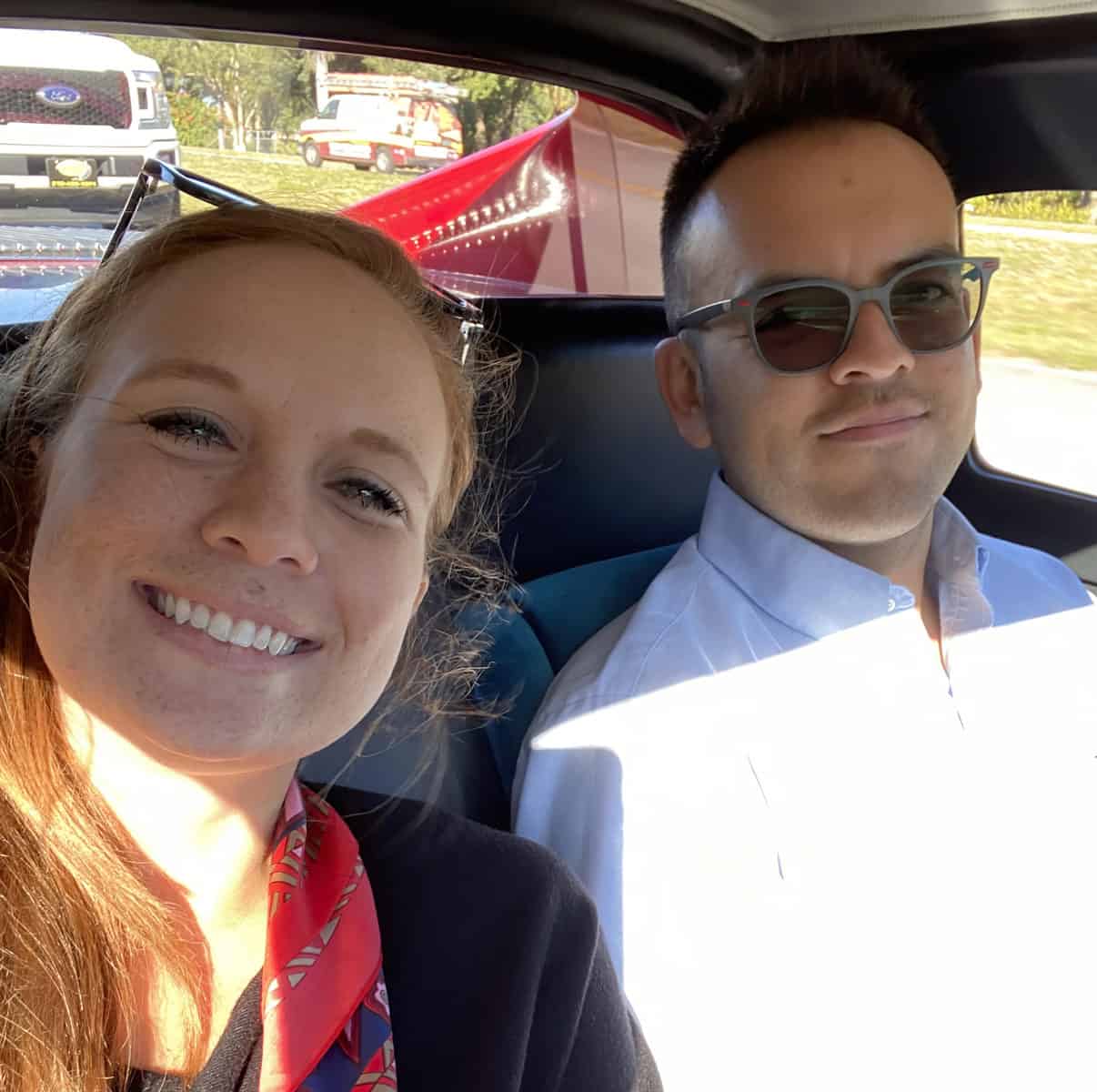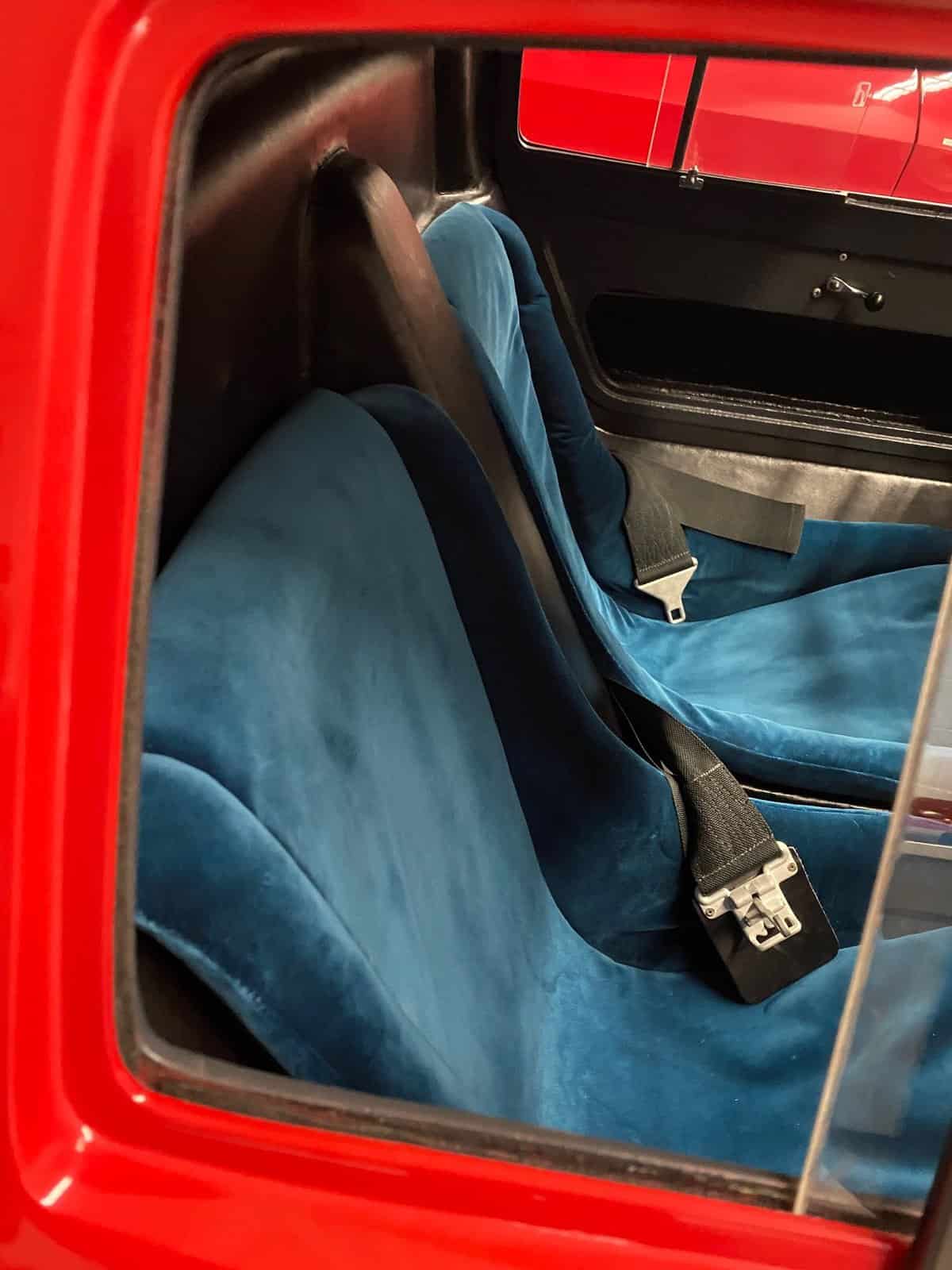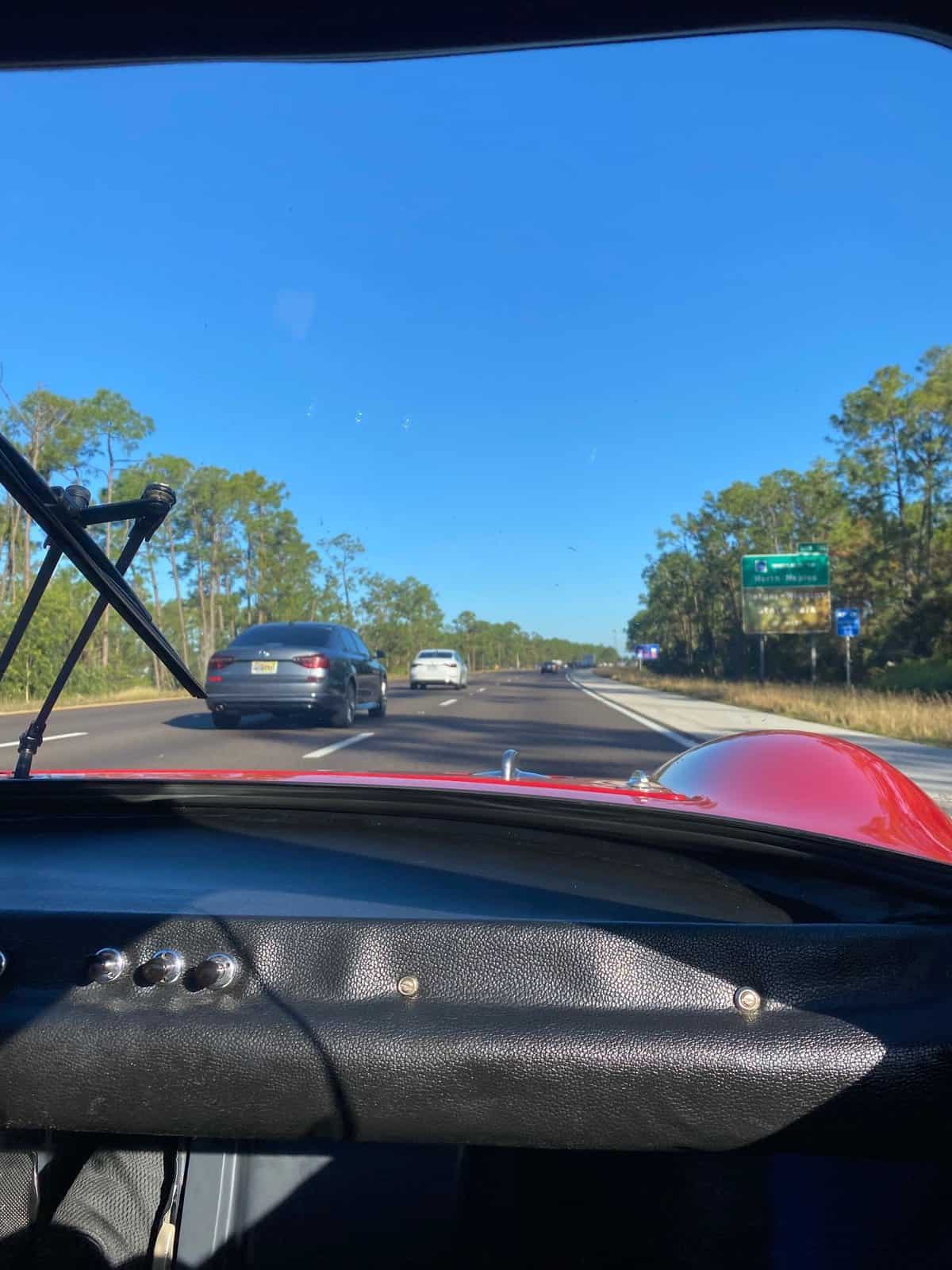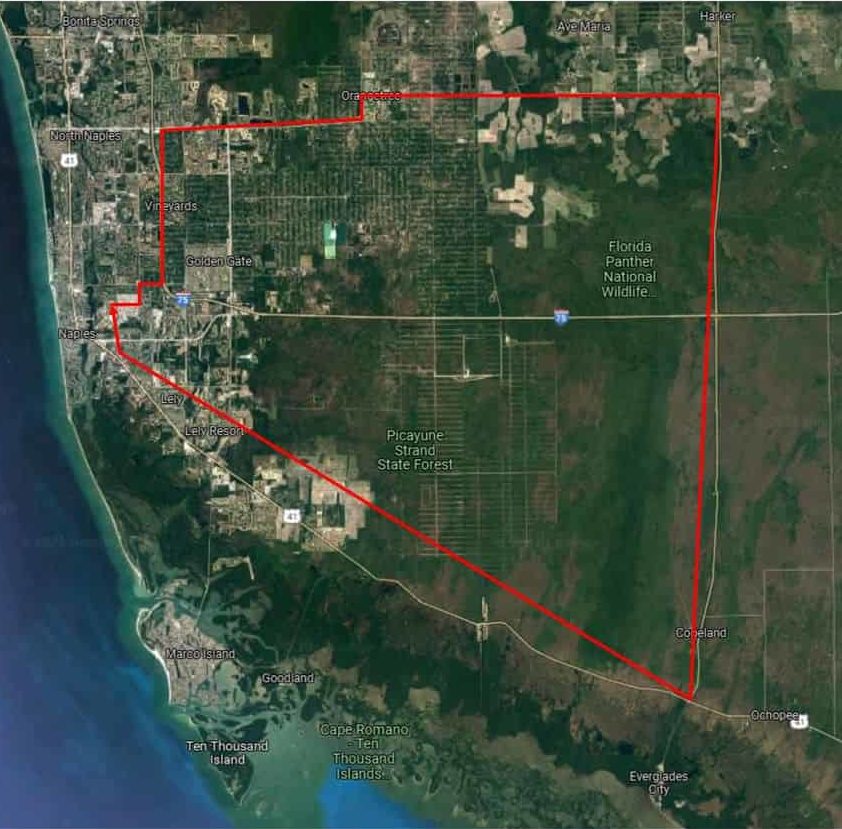Millennials in Motorcars
An unforgettable drive in a 1964 Porsche 904 Carrera GTS
BY: JANE HAMEL
PHOTOS: PETER HARHOLDT (TOP); JANE HAMEL
When Revs Institute technician Pedro Vela told me he would be spending his morning driving a 1964 Porsche 904 Carrera GTS around town, I snarkily told him it must be nice having a job in which taking a road trip in a historic car is what you get paid to do.
When he extended an invitation to me to be his copilot and shotgun rider, there was absolutely no way I could say no. I’m fortunate to work at Miles Collier Collections as Special Projects Liaison, but opportunities like this one are special and not to be passed up. What follows is my account of an unforgettable hundred-mile drive around Collier County, Florida.
It was a sunny day, like ninety-eight percent of the days in southwest Florida, as I raced into the parking lot to ensure that I wasn’t late for my mini road trip. I pulled up and got out of the car thanking the weather gods that the humidity was low, because there’s nothing like sitting in a car with no air-conditioning when it’s above eighty degrees with eighty percent humidity. I dropped my stuff at my desk and made my way to the workshop to watch the team push the car out of the garage. Pedro got in, fired up the car, and I listened to it purr to life. He beckoned me over and told me to be careful not to step on the floorboard as I got in.
Question: How does one enter a car while being mindful of the floorboard? Well, to any ladies reading this, let me first tell you that heels and historic fiberglass cars don’t mix well. Having no experience with fiberglass cars, my choice of shoe (while very cute) was a poor one, leading to my ungraceful entry into the 904 butt first, plopping down into the plush teal-velour bucket seat in an attempt to not damage anything. After successfully sitting down, feet on the asphalt to my right, the next directive from our workshop team was that I take off my shoes to ensure no damage to the car. So it was that I found myself riding for a hundred miles shoeless like I was a passenger on any old road trip and not about to embark in a 1964 race car.

Now appropriately ensconced in the car, I reached for my seat belt only to find that safety was evidently of no concern for the copilot in this car. Failing to find a seat belt, I looked for a handle so I could hang on during any turns we might make. At this point I was zero-for-two on safety measures – no “oh shoot” handle, no seat belt. It’s not that I didn’t trust Pedro’s driving – he strategically bobs and weaves in traffic like no one I’ve met. I suppose I shouldn’t have been surprised to not find such “modern conveniences” as passenger seat belts in a 1964-vintage car, but still, having grown up in the post-Nader automotive world, I take such things for granted. Fortunately, we were not going for a ride around Sebring International Raceway. Instead, we would be keeping things safe and simple by driving on the public roads of Collier County – though, anyone who’s driven in any part of southern Florida knows that navigating our roads can at times be just as harrowing as driving on a racetrack.
There is a reason that the race car drivers you see on Formula 1 race weekends and in races throughout history all seem to have the same physique: These cars are meant to be driven by slight, thin individuals with little feet. Competition cars are tight, cramped, and built for speed, not comfort. I felt truly wedged in the seat, which precipitated a fresh wave of guilt from excessive holiday eating as I squeezed my slightly large hips into the seat and scrunched my long legs out in front, sock-clad feet resting on the access panel to the car’s battery. It’s a wonder how anyone over six feet could ride comfortably without craning their neck to the side.
We started our drive and pulled out of Revs Institute making our way to I-75. The Porsche 904 has become known as “the first collectible racing Porsche” due to its unique design. As an art history major in college, I appreciate the beauty of “things” and this car is certainly a beautiful thing. Quoted as having a “flying buttress” rear window, the 904 inspired Pininfarina’s stylish Ferrari Dino GT. The swooping front fenders are enough to make anyone stop and do a double take; you can imagine the looks we received on the highway. As we were sitting at a stop light in the middle lane, I looked over to my right and it dawned on me, how low we were to the ground. At forty-one inches tall with a ground clearance of five inches, the car’s proportions meant my eye level was even with the next driver’s hubcap. Sitting in a car this low, it feels less like driving and more like skimming along the blacktop.

As we merged onto the highway, the manual transmission conversation began. When I started learning how to drive, I thought that learning to drive a manual was included in the instruction I would receive. Unfortunately, my generation either doesn’t have access to or doesn’t care to teach manual driving and so I never had the opportunity. As I went through driving lessons with my dad, I found out that I dodged the bullet of learning to drive a manual if I frustrated him so easily just driving an automatic car. So, to this day I have not been trained to drive a manual vehicle. Over the noise of the road, Pedro began telling me about shifting gears, the relationship between the transmission and the engine, and the engineering that goes into race-car development. As I listened, retaining about 2 percent of the information from this conversation, my attention was drawn to the floorboard, where I noticed Pedro performing a dance of sorts with both feet navigating three pedals. Driving a manual transmission must be such a natural thing to most car enthusiasts today, but to me, watching this dance was fascinating. As we continued our trip, having exited I-75 onto Immokalee Road, and heading toward Oil Well Road, Pedro told me about the first time he was taken for a lap in a Porsche 935 Racer by professional racing driver Gunnar Jeannette. The effortless grace with which Gunnar worked the pedals and shifted gears to get the car gliding around the racetrack was like watching a ballroom dancer perform, he said.
We made our way onto Oil Well Road, nearing Ave Maria. The traffic was minimal, allowing us to cruise at a speed of about 100 km, and I started to get sleepy. Did you ever go for a road trip, or embark on a long drive home, and the car is relatively cool, the sun is just right in the sky, and your body feels warm from the inside out? That’s the pleasant sensation I felt at that moment.

As we turned onto State Road 29, we drove through national preserves and wildlife refuges. Sitting in the tiny cockpit, I was so content and comfortable that I drifted into a daydream, watching southwest Florida’s natural bounty pass by outside my window – palm trees, cypress, swamp grasses, and wildflowers; egrets, herons, and birds of prey flew overhead. As we cruised along in this ruby-red Porsche, I thought how fortunate I was to experience such beauty firsthand.
And then Pedro slammed on the brakes.
He didn’t really slam on the brakes, but he braked hard enough to disrupt my reverie. Pedro has been working on the 904 for about three months and, in that time, I’ve seen the car in various stages of undress in the workshop, occasionally asking him about his experience literally dismantling and rebuilding the car from memory. As a newly minted car enthusiast, I picked up on words like “exhaust header” and “brake calipers” as he told me the restoration story. Having completed the work within the last few weeks, Pedro was tasked with finalizing the project by racking up some mileage on the odometer. On his first venture out, he noticed an exhaust header leak. Having fixed that issue, he took the car out again, only to have it shudder each time he stepped on the brakes. He explained that one rotor was warped, necessitating its replacement. Our test drive was meant to find out whether the replacement had cured the problem, hence the rapid brake maneuver. When my heart slowed down, and he finished laughing at me, he explained the rotor story and was pleased to announce that the shuddering had stopped.
From State Road 29 we merged onto US-41, drove up Tamiami Trail and back into town. Our team’s practice is to exercise cars on roads in the area and it’s no surprise that they commonly come to a stop light and meet a curious admirer – like the one on this trip, who shouted, “What kind of car is that?”

As we turned onto Horseshoe Drive, nearing the end of our tour, Pedro told me what many others had warned about prior to getting into the 904 – getting in is the easy part; getting out is the challenge. I’d had a difficult time getting into the car, so when we approached the museum, I could only imagine how I’d get out. Making matters even worse, we pulled up to the museum right as the workshop team started their break. Would they all witness me bailing out of the car hands first onto the ground?
Grateful that I’d decided to wear pants that day, I reached for the door handle but found it was just a wire hidden inside the door that you pull down to open. With the door now open, I mentally ran through the best exit strategy – shift in the seat, throw my right leg out of the car, wiggle around a bit until I could support myself on the edges of the seat, tuck my head to my shoulder and voila! All that was left was to stand up and take a bow, stretch my incredibly cramped legs and hips, and walk around for an hour to loosen my muscles. And then pinch myself – I’d just completed my first “tour” in a historic 1964 Porsche 904.




